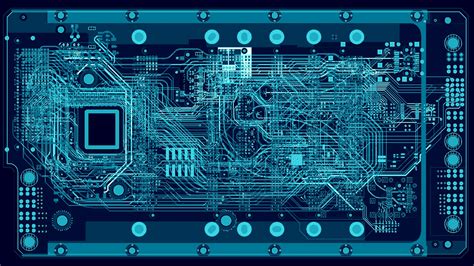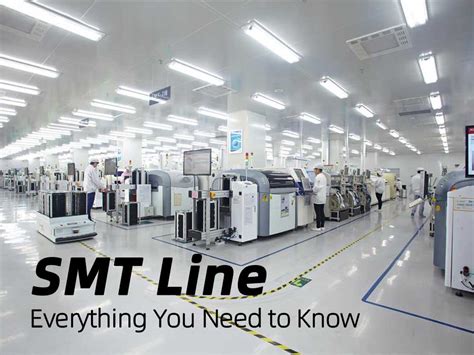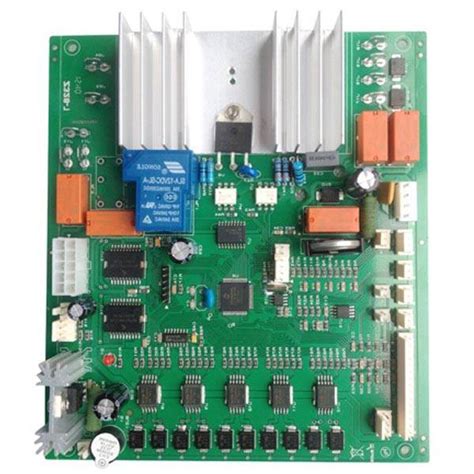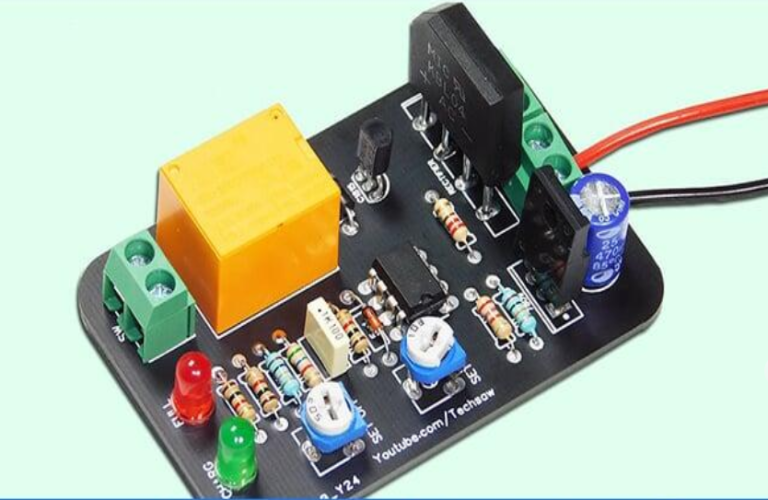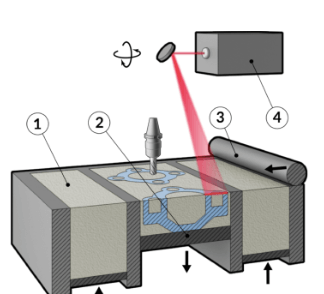Mastering Complex PCB Assembly: Techniques for Precision and Efficiency
Key Takeaways
Mastering complex PCB assembly (PCBA) requires a comprehensive understanding of various techniques that enhance both precision and efficiency in the production process. It is crucial for manufacturers to adopt a systematic approach in addressing the unique challenges that arise during PCB assembly. By implementing effective strategies such as thorough design reviews, meticulous component placement, and rigorous testing protocols, teams can significantly reduce errors and streamline operations. Additionally, leveraging advanced tools and technologies—such as automated assembly machines and inspection systems—can optimize the workflow, ensuring that each step contributes to an overall increase in productivity. Emphasizing quality control measures throughout the PCBA process is essential for maintaining high standards, as it helps in identifying and rectifying potential issues before they escalate. These ## Key Takeaways not only highlight the importance of precision and efficiency but also serve as a foundation for continuous improvement in electronic device production.
Introduction to Complex PCB Assembly
Understanding complex PCB assembly is pivotal in today’s technology-driven landscape. As electronic devices become more sophisticated and compact, the intricacies of PCB assembly (or PCBA) processes have intensified. This requires not only a grasp of the foundational principles of PCBA, but also the mastery of advanced techniques that enhance both precision and overall efficiency. The significant challenge lies in managing the increase in component density and ensuring that each connection maintains its integrity.
Effective complex PCB assembly relies heavily on a combination of smart design practices and the right tools. Design for manufacturability (DFM) plays a crucial role; it’s essential that designers collaborate closely with engineering teams right from the initial phase to address potential issues early on. Furthermore, employing automated assembly techniques can streamline workflows, significantly increasing productivity.
“Precision in assembly is not just an option; it’s an imperative for reliable device performance.”
Incorporating robust quality control measures at every stage can mitigate risks associated with complex assemblies, ensuring that potential faults are identified promptly. The integration of innovative technologies such as automation, machine vision, and AI-driven analytics can facilitate real-time monitoring and adjustments during the assembly process, enhancing both efficiency and quality.
As we delve deeper into this intricate field, understanding these foundational aspects will help navigate the complexities synonymous with effective PCB assembly, ultimately leading to more reliable and high-performing electronic devices in the marketplace.
Key Techniques for Enhancing Precision
Achieving precision in PCB assembly is paramount for the reliability and functionality of electronic devices. One effective technique involves utilizing advanced alignment equipment that ensures components are accurately positioned on the printed circuit boards (PCBs). This includes employing automated pick-and-place systems that can handle the intricate task of placing components with micron-level accuracy, which is critical for complex assemblies involving multilayered PCBs.
In addition, implementing effective soldering techniques, such as using reflow soldering and wave soldering, can significantly enhance the quality of the joints and reduce defects. Utilizing high-quality solder paste and maintaining optimal temperatures during the process ensures that connections are robust and enduring, which is a key aspect of successful PCBA.
Moreover, enhancing precision requires careful consideration of the design files prior to assembly. Conducting a thorough Design for Manufacturability (DFM) analysis can identify potential issues such as grounding concerns or trace width inadequacies before they result in costly errors during assembly. This practice not only saves time but also prevents material waste, further contributing to efficiency in production.
Here’s a brief overview of some essential techniques for enhancing precision in complex PCB assembly:
| Technique | Description |
|---|---|
| Automated Alignment | Uses precision equipment to ensure accurate placement of components on PCBs. |
| Advanced Soldering Methods | Incorporates techniques like reflow and wave soldering for optimal joint quality. |
| Design for Manufacturability | Involves pre-assembly analysis to rectify design issues early in the process. |
By focusing on these pivotal areas, manufacturers can bolster the accuracy of their PCBA, leading to higher quality electronic devices and greater overall production efficiency.
Strategies for Improving Assembly Efficiency
In the realm of pcb assembly, enhancing efficiency is not merely a goal but a necessity for successful pcba production. One effective strategy to improve assembly efficiency is to implement lean manufacturing principles. By streamlining processes and eliminating waste, manufacturers can reduce cycle times and enhance productivity. Furthermore, investing in automated assembly equipment also plays a crucial role in boosting pace and accuracy during the assembly process. This equipment can perform repetitive tasks more reliably than manual labor, ensuring that each step maintains the required level of precision.
Another vital strategy is to foster a culture of continuous improvement within the team. Encouraging open communication about challenges faced in the assembly process can lead to innovative solutions that enhance overall efficiency. Training staff on best practices and keeping them updated with the latest techniques in pcb assembly can significantly reduce errors and downtime.
Additionally, optimizing the layout of the assembly line can have substantial benefits. A well-planned workspace minimizes movement and helps maintain a smooth workflow, reducing the chances of bottlenecks during production. By analyzing each step of the process, companies can identify areas for improvement that will lead to quicker turnaround times without compromising on quality.
Finally, leveraging advanced software solutions for project management will enable better tracking and resource allocation throughout the assembly phases. These strategies combined create a robust framework for improving efficiency in complex pcb assembly, ensuring that teams are well-equipped to meet production demands efficiently while maintaining high standards of quality in every pcba produced.
Common Challenges in Complex PCB Assembly
Navigating the world of complex PCB assembly (PCBA) is no small feat, as it presents a multitude of challenges that can impact the overall success of electronic device production. One of the primary hurdles is ensuring precision during assembly, as intricate designs and densely populated layouts increase the likelihood of errors. Soldering defects, such as cold joints or bridging, can compromise functionality and reliability. Moreover, component placement is critical; misaligned parts can lead to malfunctioning devices or even irreparable damage to the PCB.
Another significant challenge involves managing assembly efficiency. As production scales up, maintaining a steady workflow becomes essential. Inefficient processes can lead to increased costs and longer turnarounds, underlining the importance of integrating effective strategies to streamline operations. This includes implementing automated systems and investing in advanced technologies to reduce human error and improve consistency.
Additionally, supply chain disruptions can pose serious threats to completing timely pcba projects. With various components sourced from different manufacturers, any hiccup in availability can stall the entire assembly line. Effective communication with suppliers and preemptive inventory management are crucial for mitigating these risks.
Lastly, achieving rigorous quality control poses its own set of challenges. Ensuring that every unit meets high standards requires meticulous testing protocols throughout various stages of assembly. From visual inspections to automated testing systems, manufacturers must deploy a range of techniques to identify defects before finishing production runs.
In conclusion, while the path toward mastering complex PCB assembly is fraught with challenges like precision errors, efficiency hurdles, supply chain issues, and strict quality demands, understanding these obstacles allows manufacturers to develop more effective strategies for overcoming them and producing reliable electronic devices.
Navigating Workflow Optimization
In the realm of PCB assembly, optimizing workflow is crucial for achieving both efficiency and precision in the production process. Understanding each stage of the assembly line allows teams to identify bottlenecks and areas for improvement. Implementing techniques such as just-in-time inventory management can drastically reduce wait times for materials needed in pcba operations, thereby streamlining processes. Additionally, adopting modular workflows can provide flexibility, enabling teams to quickly adjust to unforeseen challenges or shifts in project demands. Automation tools play a pivotal role in enhancing productivity; using automated optical inspection systems, for instance, not only increases accuracy but also minimizes human error during component placement. Furthermore, regular training sessions for staff ensure that everyone is equipped with the latest knowledge and best practices in handling complex assemblies. By fostering a culture of continuous improvement and collaboration, teams can navigate the complexities of PCB assembly more effectively, leading to better outcomes and higher-quality products that meet stringent specifications.
Tools and Technologies for Successful Assembly
In the realm of complex PCB assembly, utilizing the right tools and technologies is pivotal for achieving optimal results. The landscape of PCBA is continuously evolving, with advancements that cater to the intricate demands of modern electronic design. Precision machinery, such as pick-and-place systems, plays a crucial role in efficiently handling components with high accuracy. Furthermore, employing automated optical inspection (AOI) ensures that each assembly meets stringent quality standards by identifying defects early in the process. Incorporating solder paste inspection (SPI) technology can also significantly enhance the reliability of solder applications, thus reducing errors associated with manual processes. Alongside these equipment advancements, software tools are increasingly important for real-time monitoring and analytics, allowing for adjustments during production to maintain efficiency. The synergy between sophisticated machinery and innovative software forms the backbone of successful PCB assembly, enabling manufacturers to tackle complex designs while optimizing productivity and quality outcomes in electronic device production.
Quality Control Measures and Best Practices
In the realm of complex PCB assembly, implementing robust quality control measures is critical to ensure the reliability of the final product. Effective quality assurance begins with a comprehensive understanding of the PCBA process, allowing manufacturers to identify key stages that require stringent monitoring. Employing methodologies such as Statistical Process Control (SPC) can significantly enhance precision by providing data-driven insights into production variability. Additionally, integrating automated optical inspection (AOI) systems can be invaluable in detecting defects early, thereby reducing the risk of failures in the pcb assembly process.
Adopting a systematic approach to documentation and traceability also plays a crucial role in maintaining high standards. Each step of the pcba lifecycle should be meticulously recorded, ensuring that all components meet defined specifications and facilitating easier identification of issues when they arise. Furthermore, fostering a culture of continuous improvement among assembly teams encourages proactive identification and resolution of potential challenges before they escalate.
Regular training on best practices for quality control not only enhances team expertise but also promotes adherence to standards that align with industry benchmarks. By cultivating diligence in these areas, manufacturers can vastly improve both precision and efficiency, setting the stage for successful electronic device production.
Future Trends in PCB Assembly Techniques
As the electronics industry continues to evolve, the pcb assembly landscape is witnessing transformative advancements aimed at enhancing both precision and efficiency. One prominent trend is the integration of automation and robotics in pcba processes, which not only reduces human error but also accelerates production timelines. Machines equipped with sophisticated sensors can now perform intricate tasks that were once manual, thus achieving a higher level of consistency and accuracy. Additionally, the adoption of advanced materials such as flexible substrates is reshaping design capabilities, allowing for more compact and versatile pcb assembly solutions.
Moreover, machine learning algorithms are being utilized to predict potential flaws during the assembly process by analyzing data in real time. This shift towards predictive analytics not only helps in mitigating risks but also enhances quality control, ensuring that each pcba meets stringent industry standards. Furthermore, the push for sustainability has led to increased emphasis on eco-friendly materials and processes in pcb assembly, prompting manufacturers to innovate while adhering to environmental guidelines. As these trends continue to develop, stakeholders in the electronics industry must remain adaptable, harnessing new technologies that promise not only improved efficiency but also longevity and reliability in electronic device production.
Conclusion
In summation, mastering complex PCB assembly is vital for improving the production of reliable electronic devices. By implementing the discussed key techniques, companies can significantly enhance their pcba processes, ensuring high levels of precision and efficiency. It is essential to recognize that challenges in this field are common; however, with a proactive approach to workflow optimization and the incorporation of state-of-the-art tools and technologies, teams can effectively navigate these hurdles. Furthermore, establishing robust quality control measures and adhering to best practices will not only streamline the assembly process but also elevate the overall quality of electronic products. As we look towards the future, staying informed about emerging trends in PCB assembly will empower professionals to adapt and excel in an ever-evolving technological landscape. Thus, embracing these strategies will undoubtedly lead to enhanced performance in complex PCB assembly, reinforcing its crucial role in the success of electronic device production.
FAQs
What is complex PCB assembly?
Complex PCB assembly refers to the process of assembling intricate printed circuit boards (PCBs) that often include multiple layers, numerous components, and advanced technologies. This involves careful design and execution to ensure all elements work together effectively.
What are the key techniques for enhancing precision in PCB assembly?
To enhance precision in PCBA, techniques include utilizing automated assembly processes, implementing stringent alignment checks, and using high-quality soldering materials. Regular training of personnel on the latest methods also contributes significantly to maintaining precision.
How can I improve efficiency during the PCB assembly process?
Improving efficiency can be achieved by optimizing workflows, employing reliable tools for automation, and performing rigorous pre-assembly checks. Streamlining component supply chains and enhancing communication among team members can also significantly increase overall efficiency.
What are some common challenges faced in complex PCB assembly?
Challenges may include managing intricate designs with tight tolerances, dealing with component misalignment, and ensuring quality control in mass production. Additionally, adapting to rapid changes in technology can pose difficulties for production teams.
How do I navigate workflow optimization for PCB assembly?
Workflow optimization involves mapping out every step of the PCB assembly process, identifying bottlenecks, and streamlining operations. Implementing lean manufacturing principles can help teams focus on value-adding activities while minimizing waste.

